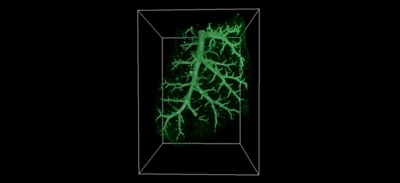Australian Synchrotron home to world’s widest X-ray beam
Innovation Minister Senator Kim Carr yesterday opened a new $25 million imaging and medical beamline (IMBL), which will offer high-resolution, phase-contrast X-ray imaging of biomedical samples and a wide range of engineering materials.
The IMBL is part of the Australian Synchrotron, a machine the size of a football field that accelerates electrons to almost the speed of light. As the electrons are deflected through magnetic fields they create extremely bright light, which is channelled down beamlines to experimental workstations where it is used for research, including imaging.
Senator Carr said the 150-metre line is the world’s widest synchrotron X-ray beam and will lead directly to advances in medical diagnosis and treatment. He explained, “The beam precedes the development of a patient care program, expected in 2016.”
“In a first for Australia, using the IMBL, scientists will be able to take a live, three-dimensional image of a breathing person in unprecedented detail, as well as track the movement of cells through tissues in real time. This has direct clinical applications.”

It is also believed that the new line will enable research and development into cancer treatments, including a new form of radiation therapy that will target tumour cells while sparing healthy tissue.
The government recently announced a $36.8 million development at the Australian Synchrotron, which would mean the line could be used around the clock by scientists. The five buildings constructed with this investment include the National Centre for Synchrotron Science, user accommodation and technical support laboratories.
The Labor government has provided more than $15 million in funding for the IMBL, including through the National Health and Medical Research Council, with additional contributions from the synchrotron’s 10 foundation partners and the Victorian state government.
The Australian Nuclear Science and Technology Organisation (ANSTO) has managed the Australian Synchrotron since January this year, building on research links between the organisations, particularly in the complementary areas of neutron scattering and accelerator science.
Flexibly shaped mirror improves X-ray microscopes
Japanese researchers have engineered a mirror for X-rays that can be flexibly shaped, resulting...
Raman spectroscopy used to detect illegal ivory
A quick and reliable method for distinguishing between elephant and mammoth ivory has long been a...
Forensic breakthrough: drugs detected on gel-lifted fingerprints
The breakthrough could shed new light on unsolved crimes, as forensic gel lifters are used...







